The Economics and Statistics Division maintains archives of previous publications for accountability purposes, but makes no updates to keep these documents current with the latest data revisions from Statistics Canada. As a result, information in older documents may not be accurate. Please exercise caution when referring to older documents. For the latest information and historical data, please contact the individual listed to the right.
<--- Return to Archive
For additional information relating to this article, please contact:
September 01, 2023CANADIAN ECONOMIC ACCOUNTS Q2 2023 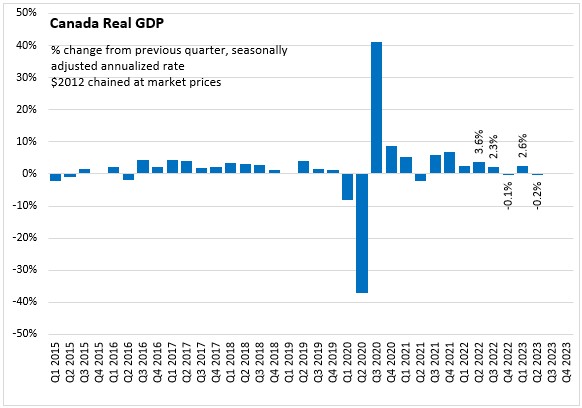
Canada’s Real Gross Domestic Product (GDP) declined 0.2% (all figures seasonally adjusted at annual rates) in the second quarter of 2023, following a 2.6% gain in Q1 2023. Compared to pre-pandemic Q4 2019, the Canadian economy was 3.5% larger in Q2 2023.
Statistics Canada notes that the slowdown in GDP growth was attributed to continued decline in housing investment, smaller inventory accumulation as well as slower international exports and household spending. Business investment in engineering structures and government spending rose in Q2 2023. Final domestic demand increased 1.0% in Q2 2023.
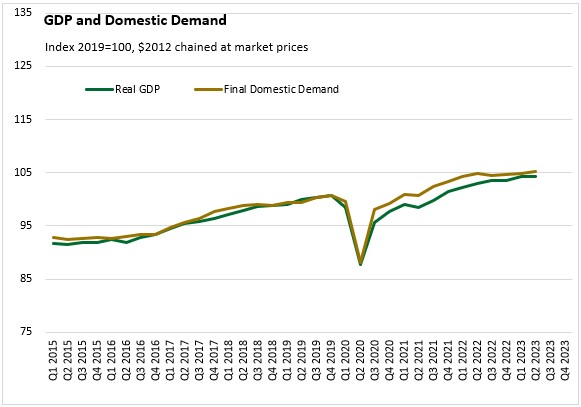
Household consumption growth increased 0.2% in Q2. A smaller increase in goods spending was driven by new trucks, vans and sport utility vehicles, reflecting improvements in previous supply chain challenges. Growth in goods spending was moderated by declines in new passenger cars, furniture and furnishings, outdoor recreation and natural gas. Growth in services remained unchanged in Q2 2023 as spending by Canadians abroad as well as spending on alcoholic beverage services declined offsetting the increase in spending on shelter services, air transport and telecommunication services.
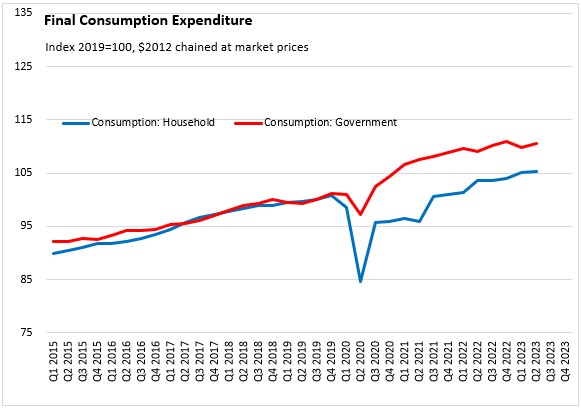
Residential investment contracted for the fifth consecutive quarter, falling at a seasonally adjusted annualized rate of 8.2% as new construction and renovation activities declined amid rising interest rates and slowing mortgage borrowing. Ownership transfer costs increased for the first time since Q4 2021. Government investment declined by 0.8%.
Business investment for non-residential structures rose on higher engineering structures. Investment for machinery and equipment increased on higher aircraft and other transportation equipment, coinciding with a significant growth in imports of ships and aircraft.
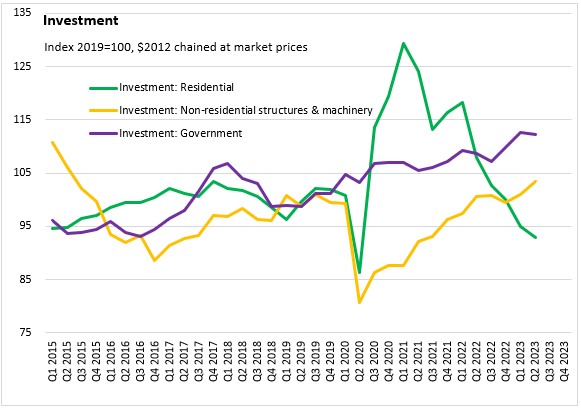
Imports increased by a seasonally adjusted annualized rate of 1.9% in Q2 because of gains in metal products, passenger cars and light trucks and aircraft.
Exports edged up 0.4% on rising intermediate metal products and commercial services, while partially offset by declines in crude oil and bitumen, wheat, and canola.
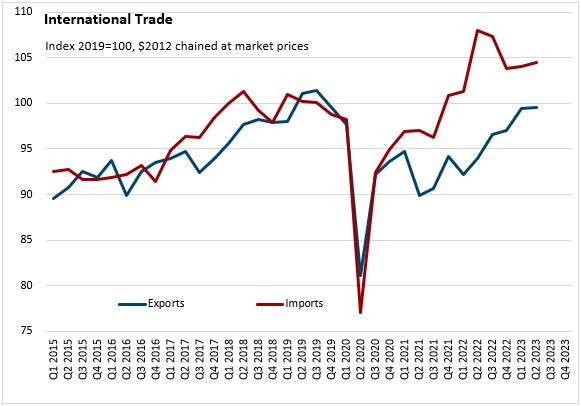
Inventory accumulation slowed to $11.1 billion in Q2, following a record high level in additions to inventory in the second and third quarter of 2022. Statistics Canada reported that the declines occurred in manufacturing and wholesale trade while motor vehicles inventories rose.
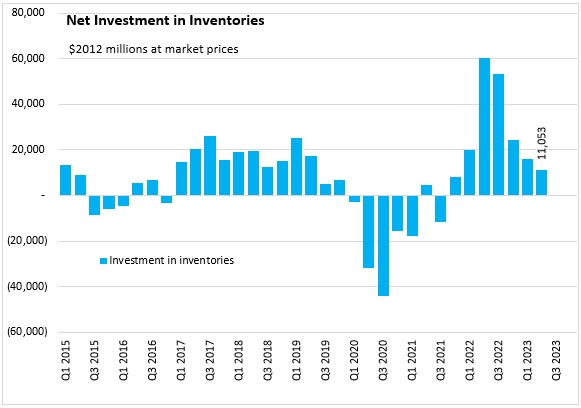
The terms-of-trade (ratio of price of exports to price of imports) decreased in Q2 driven by the decline in prices of exported goods. This was the fourth consecutive quarterly decline.
The overall GDP deflator (reflects overall price of domestically produced goods and services) was up 2.9% on annualized basis.
Nominal GDP increased at a seasonally adjusted annualized rate of 2.7% in Q2, following the 3.1% increase in Q1 2023.
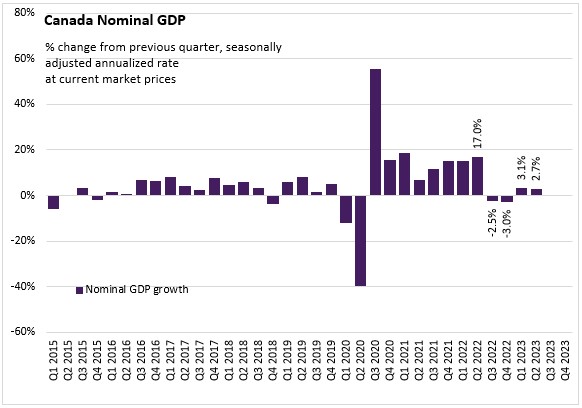
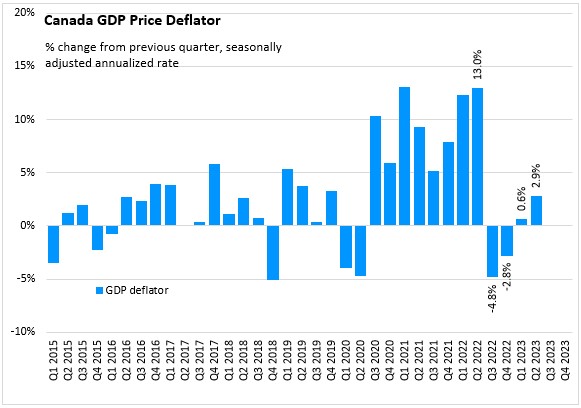
Employee compensation (measured in current prices, not real volumes) was up by a seasonally adjusted annualized rate of 9.1% in Q2. Statistics Canada noted there were two large retroactive payments in Q2, one for health care in Ontario and the other for the military. The largest increases in compensation were in professional and personal services, health care and social assistance, and wholesale and retail trade.
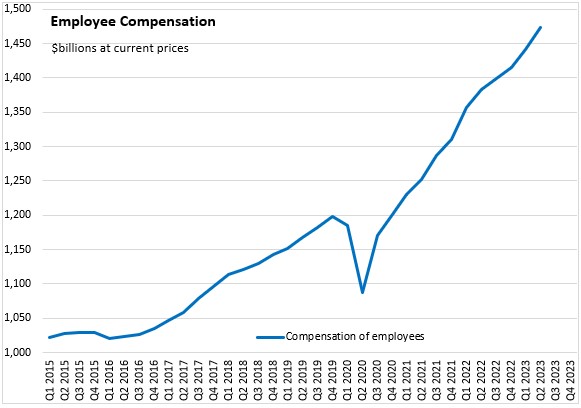
Lower revenues for energy companies decelerated net operating surplus of corporations, though it remained elevated. Net mixed income continued to increase in Q2.
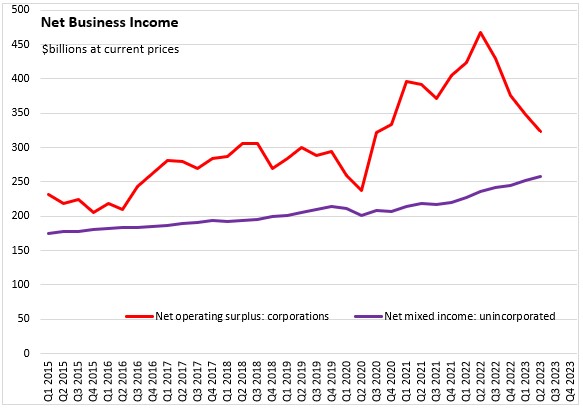
With slower growth in nominal household consumption expenditures, the household savings rate increased to 5.1% of disposable income in Q2.
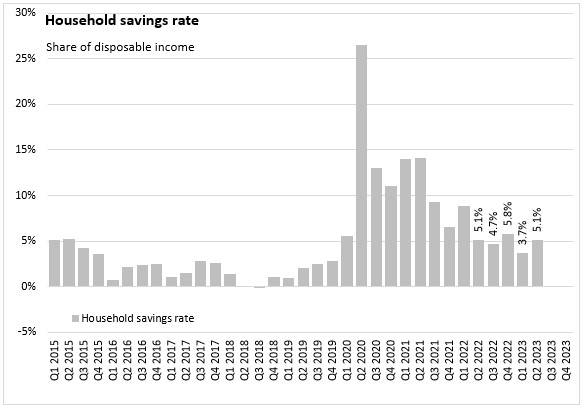
Source: Statistics Canada. Gross domestic product, income and expenditure, second quarter 2020, Table 36-10-0103-01 Gross domestic product, income-based, quarterly (x 1,000,000), Table 36-10-0104-01 Gross domestic product, expenditure-based, Canada, quarterly (x 1,000,000), Table 36-10-0111-01 Current and capital accounts - National, Canada, quarterly
<--- Return to Archive